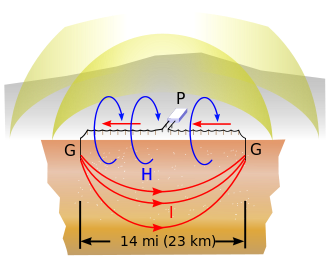Don’t worry, I’m sure Bruce fucking Willis will be on hand to prise open the doors at the last minute.
Yea WTF I had that controller when I didn’t want to spend a lot of money and I wanted to use a controller for my computer games before Windows worked well with Xbox controllers, not when my life was in my hands.
They didn’t even bother painting the thing orange like every piece of nautical safety equipment ever, gl finding this floating metal can in the ocean without a transponder, and that’s assuming they managed to surface.
You’ve already repeatedly demonstrated why I messed with you you don’t have to keep going. I do find it amusing though.
The Navy figured out the basic tools for finding submarines in WWII, active sonar. Communicating with them is much more difficult, the Chinese recently built a facility “The size of New York City” that only works at a depth of several hundred feet and then only transmits like 100 bits/second.
My guess is that they have one of those Apple Air Tags inside. .
https://twitter.com/Starlink/status/1666911689344962576?s=20
Internet from space supporting Titanic dive expedition
https://twitter.com/OceanGateExped/status/1664306619608449026?s=20
Despite being in the middle of the North Atlantic, we have the internet connection we need to make our #Titanic dive operations a success - thank you @Starlink!
Very Low Frequency communication, the USN has one in the UP of Michigan. The upside is it’ll go through water bigly, the downside is you need half wavelength antenna for efficient transmission, same as any radio, and the wavelengths are on the order of miles. Other downside as you point out is the low bandwidth which is just a consequence of the very low frequency. I think it’ll work anywhere but you’d only use it in hundreds of feet of water because it’s so incredibly slow.
If there’s a guy hitting an SOS on the hull of the sub with a wrench I’d bet the Navy could hear it on their passive sonar. I don’t know though. Seems like those guys are all hosed regardless though.
Gotta watch out for Russian POWs doing that too, according to a documentary I saw once
So I was wrong, the UP was Ultra Low Frequency, was never built, and it would have been an antenna like two hundred miles long. Would have gone down as deep as subs can go. Environmental protests axed it. VLF is just down to like 150 feet max.
Does it eff with whales?
Screenshotted just in case it gets deleted.
In a press release in 2019, the company explained why the Titan had not been classed by an independent body. “Bringing an outside entity up to speed on every innovation before it is put into real-world testing is anathema to rapid innovation,” it said.
the missing sub has a unique design and some surprising features.
At the meeting Lochridge discovered why he had been denied access to the viewport information from the Engineering department—the viewport at the forward of the submersible was only built to a certified pressure of 1,300 meters, although OceanGate intended to take passengers down to depths of 4,000 meters. Lochridge learned that the viewport manufacturer would only certify to a depth of 1,300 meters due to experimental design of the viewport supplied by OceanGate, which was out of the Pressure Vessels for Human Occupancy (“PVHO”) standards. OceanGate refused to pay for the manufacturer to build a viewport that would meet the required depth of 4,000 meters.
go fuck yourself asshole
Ruh roh. Not surprising at all, though
And for those wondering
For reference, the Titanic is estimated to sit on the ocean floor at a depth of nearly 13,000 feet.
Basically 4000 meters
Not sure, I think it was more concern for the ground current it would transmit

The project was controversial from the start and was attacked by politicians, antiwar and environmental groups concerned about the effects of high ground currents and electromagnetic fields on the environment.[2][3][6][7] The nuclear survivability of the system was made doubtful by Soviet development of MIRV ballistic missiles.[3] After an attempt to resite the project in the Llano Uplift of Texas[8] was also stopped by public opposition,[3] the Navy abandoned Sanguine and proposed a series of increasingly modest variants: Project Seafarer (1975), Austere ELF (1978), and finally Project ELF (1981), which was constructed.[3][5] This lower power system required 15 minutes to transmit each code group, so it was not used to transmit tactical orders directly but instead served the function of a “bell ringer”, ordering a specific vessel to surface and receive further orders by ordinary radio or satellite communication. [1][2][3] The system became nominally operational in 1989, 20 years after it first went online as “test facility,” and was used until 2004, when the US Navy declared it obsolete and it was shut down and dismantled.
All rules sound complicated when you lay them out like this. It’s actually really simple.
You get out LBW if the ball would have hit the stumps but instead your leg got in the way.
There’s a couple of caveats to make it a fair bowl.
Interesting. The current to your fancy house returns on the neutral provided by the utility, but back in the day and still in some very rural places they just gave you one hot wire and let the ground carry the return.
People are fixated on the videogame controller as if that isn’t a standard, reliable COTS part that gets used in all kinds of drone applications.